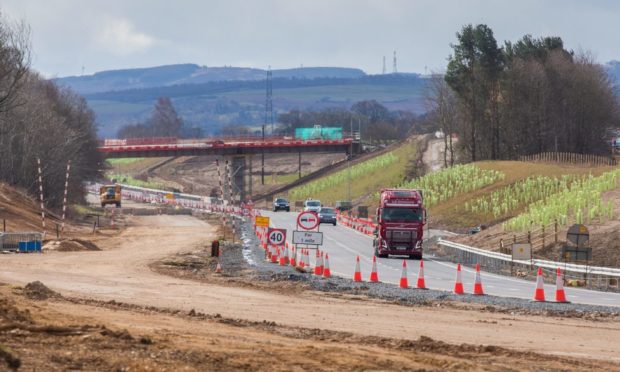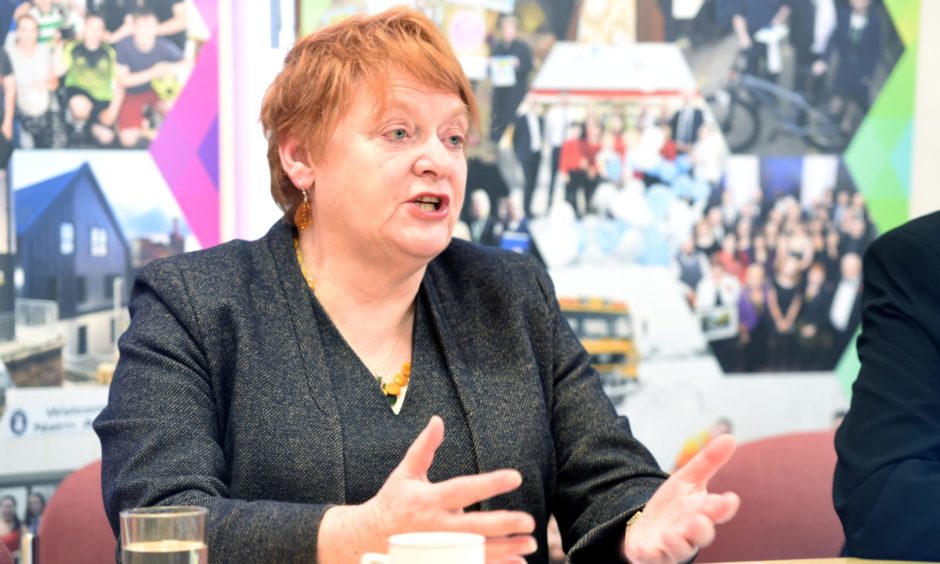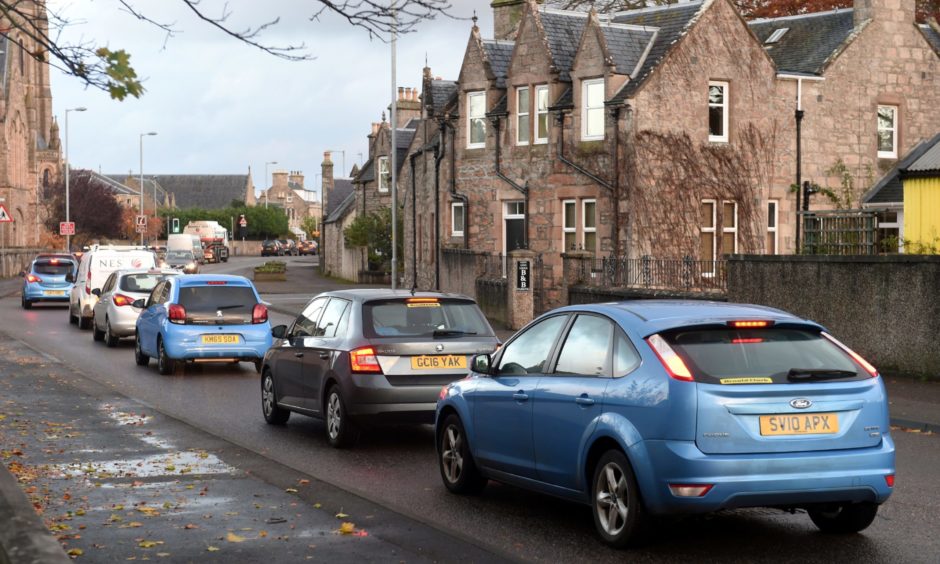The leader of Highland Council is seeking talks with Scottish ministers amid alarm at new delays to the dualling of the A96 Inverness to Aberdeen road.
Margaret Davidson said she is “very concerned” about the Holyrood government’s waning commitment to the long-awaited project, particularly the Nairn bypass section.
The dualling of the entire route of the A96 between Aberdeen and Inverness had been targeted by 2030, with the Nairn bypass originally earmarked for completion in 2021.
However, Transport Secretary Michael Matheson admitted last year that the pandemic could hit the timetable, and it was recently reported that the work could now be “delayed indefinitely”.
The government’s latest infrastructure investment plan (IIP) envisages just £20 million of the £3 billion A96 project being spent between now and 2025/26.
The A9 dualling programme between Inverness and Perth is also expected to be delayed, although one councillor said last night the original 2025 target for completion was always “grossly optimistic”.
Mrs Davidson said it is the A96 work, and particularly the congestion-busting Nairn bypass, which caused her concern.
“Michael Matheson has said they are still behind those projects, but the ones (commitments) on the A96 don’t seem as firm, and I’m very concerned about the Nairn bypass not being done,” she said.
“Both of them are so important to the Highlands. The A9, no-one is too surprised that is going to take longer.
“If you look at the work that is on just now and how long it is taking, it’s not that simple to do and we’re not surprised it’s taking longer.
“The A96 is a bit different because what worries me is the Nairn bypass and the congestion that they have around Nairn.
“That one worries me. We’re going to have discussions about how we deal with that, and speak to ministers about it because that does give me some concern.”
‘Huge geographical area’
The first of 11 sections of A9 dualling, between Kincraig and Dalraddy, opened in 2017, with work under way on the second part between Luncarty and Pass of Birnam.
The IIP outlines plans to spend £328m on the overall £3bn scheme by 2025/26.
Mrs Davidson said: “We all want to see more active travel. We all want to see decarbonisation where we can, but we do need arteries that work for the Highlands.
“We’re such a huge geographical area, and we just need to make sure that the arteries that we have work.
“That’s why we’ve backed up the Scottish Government decisions to invest in the two arterial roads of huge importance.
“It would be good if they were talking about the A9 north of Inverness as well, and they’ve been fairly silent on that, because we’ve got some real issues.
“We’ve got major investments into Easter Ross and further on, up into Caithness, and silence reigns on a lot of those.”
‘Fundamental to Highland economy’
Highland Council convener Bill Lobban, who represents Badenoch and Strathspey, said: “Let’s be honest, the 2025 timescale (for the A9) was grossly over-optimistic in the first place.
“Probably through necessity, the government has had to push the timescale back. If it is pushed back to 2030 etcetera… I don’t see that being a problem.”
He added: “I do think they intend to do it – it’s so fundamental to the Highland economy. I just think the important thing is some honesty about when it will be done.
“If it is going to be done in 2030, or even if it is going to be done in 2035, a concrete commitment is important.
“But I believe they will complete the A9 project, and will deserve a great deal of credit for doing so.”
Impact of pandemic
First Minister Nicola Sturgeon was asked about the delays to the A96 and A9 works at Holyrood last week.
She said: “We continue to take forward plans to dual the A9 and the A96.
“Despite the 5% cut to Scotland’s capital budget as a result of Westminster budget decisions, we have completed the first section of the A9 and construction is well under way on the second, with the project expected to open to traffic in the winter of this year.
“The design and development process has been protracted by the impacts of Covid and, rightly, through ensuring that the statutory process concludes, with local communities having their say and any objections being resolved as far as possible.
“Design work is well under way on dualling the A96. That is a significant undertaking that requires careful, in-depth planning and design to ensure that we deliver the right schemes and keep impacts on the environment to a minimum.
“Once the statutory process concludes, a timetable for progress can be set.”



